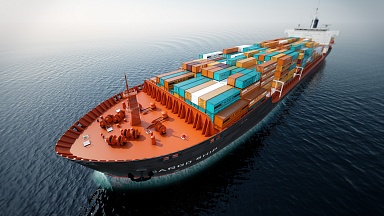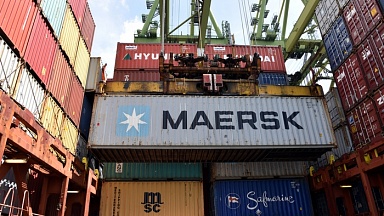From 1 April, Hapag-Lloyd’s new Asia-North Europe FAK rates will be $1,600 per 20ft and $3,000 per 40ft, while for western Mediterranean ports, the rates will be $2,800 and $3,500.
And MSC’s new FAK rates for North Europe, from the same date, will be $2,280 per 20ft and $3,800 per 40ft, and for the west Med will be $3,150 and $4,300.
Asia-Europe spot rates have lost half their Red Sea crisis rate gains in the past month, and carriers are now attempting to ‘hold the line’ on the revenue erosion with their new FAK rate markers.
Interestingly, Drewry’s WCI average spot rates for North Europe and the Mediterranean have yet to reach the level of Hapag-Lloyd’s new FAK rates, with readings this week of $3,209 per 40ft for Asia-North Europe and $3,882 per 40ft for Asia-Mediterranean.
However, both the North Europe and Mediterranean components gave up another 8% in value in the past seven days and, with demand especially weak, spot rate levels could be on track to halve again by May.
Indeed, this week’s Ningbo Containerized Freight Index (NCFI) commentary was not optimistic of any short-term recovery in demand.
«Demand for market transportation shows no sign of improvement and carriers have had to undersell rates to canvass more shipping orders, driving freight rates further down,» said the NCFI report.
And in a virtual live session customer update on Monday, Hapag CEO Rolf Habben Jansen conceded that rates from Asia to Europe were still falling. he said: «What we foresee is that, after we initially saw quite a bit of panic...and spot rates went up a lot, we now see them normalising again, but I would expect them to remain above pre-crisis levels.»
Meanwhile, on the transpacific, the WCI Asia-US west coast spot rate component was down 4% on the week, to an average of $3,934 per 40ft, while the US east coast reading slipped just 1%, to $5,376 per 40ft.
Spot rates on the transpacific remain highly elevated and are still twice as high as 12 months ago, driven not only by the disruption impacting the Suez and Panama canals, but also by robust demand, which saw import container throughput at the top 10 container terminals in the US jump 25% in February, compared with the same month of the year before, according to John McCown’s latest analysis.
The relative strength of the transpacific market could persuade shippers to return to the negotiating table to finalise their new annual contracts for 1 May, having walked away from initial carrier responses to RfQs at the S&P Global TPM24 conference earlier this month.
And, on the transatlantic, carriers are managing to hold spot rates above the critical $2,000 level, with Xeneta’s XSI average spot edging down 2% this week, for an average of $2,051 per 40ft.




